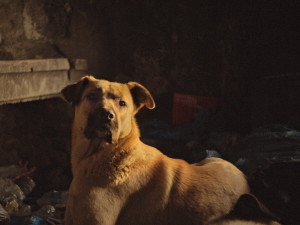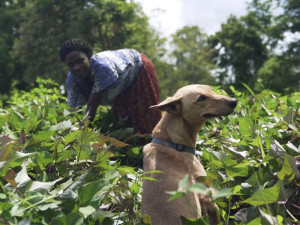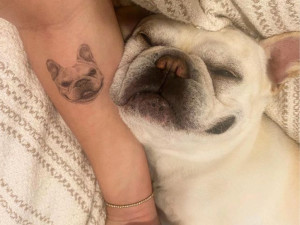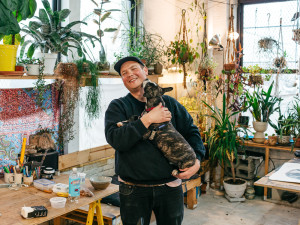The Truffle Hunters: A Documentary Portrait of Human-Dog Partnerships
This film is a heartfelt portrait of truffle hunters and their dogs
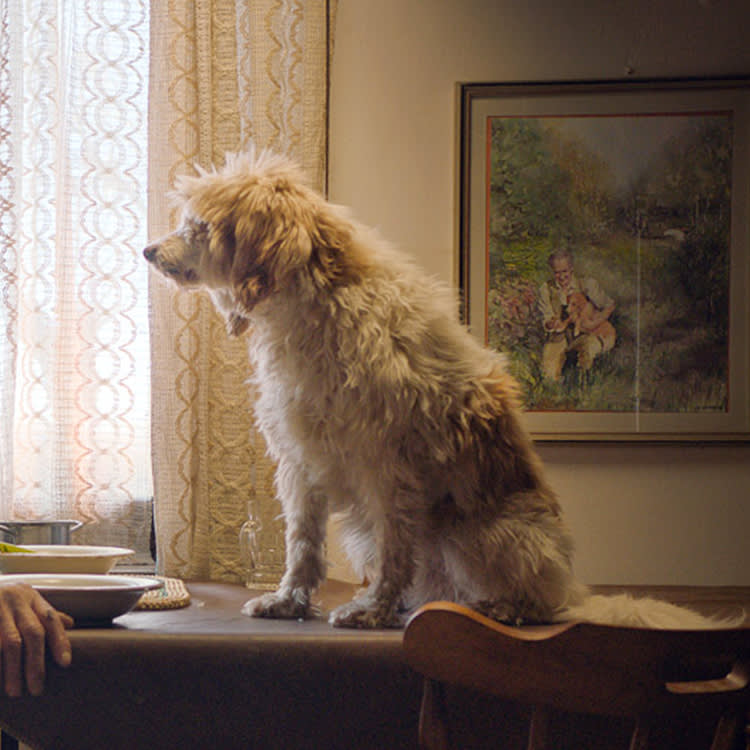
Share Article
The Truffle Hunters (Sony Pictures Classics) is a charming, mysterious and beautiful film about a cadre of venerable Northern Italian men and their beloved dogs. Together, they hunt one of the world’s most-prized culinary delicacies: the delectable white Alba truffle, coveted and desired by gourmands around the world. The film is also a study of the sweet love that exists between these men and their dogs as they work together towards a shared mission.
The prized Alba truffle is found deep in the forests of northwestern Italy, in a region known as the Piedmont. Pungent but rarified mysteries, they cannot be cultivated and are exceedingly difficult to locate in their natural habitat. This tiny circle of canines and their elderly human companions are among the few who know how and where to unearth them.
Secrets of Truffle Hunters
In order to protect their techniques and hunting locations, pairs of men and dogs regularly scour the forest floor at night so as not to leave clues for others. Each man has a hunting ground to which he returns faithfully and which he keeps secret from everyone. The men don’t share information about their finds among themselves, nor with friends or families or even their priests. In one scene, an 84-year-old truffle hunter is cajoled by a much younger man, who attempts (without success) to get him to reveal his secrets and favorite hunting grounds. When the frustrated younger man declares, “All of your secrets will disappear when you die!” it becomes clear that what we are watching is the end of a particular way of life.
Those seeking a tutorial or comprehensive examination of this amazing activity—equal parts sport, hobby, agricultural harvest and secret-society treasure hunt—will need to look elsewhere (Wikipedia and YouTube are two sources for the basics). This is not your typical Ken Burns or Discovery Channel documentary. There is no historical overview, no cast introductions or narrative voiceover to guide you. If that is your preference, you may be disappointed.

But you would do well to embrace what this wonderful film is, rather than pine for what it is not. It is a heartfelt portrait of truffle hunters and their dogs: an exquisitely photographed film, each scene framed akin to a Renaissance painting. The ancient buildings, the snow-covered fields, the rolling farmland, the lush forest are photographed like still portraits, often with available light, which gives the film a warm and intimate glow.
This film has no traditional narrative; it simply observes. Yet there is a point of view, and the filmmakers capture both the eccentricity of its cast of characters as well as the idiosyncrasy of the subject.
With unprecedented access to the lives and activities of the secretive truffle hunters, filmmakers Michael Dweck and Gregory Kershaw (The Last Race, 2018) follow the cycle from forest floor to restaurant plate. Viewers catch a glimpse of the truffle trade, sales to wholesalers and to restaurants, business transacted in the shadows as well as at high-priced auctions—places far removed in both atmosphere and price from the world of the truffles’ humble hunters.
The most exhilarating moments of the film are the scenes of the hunt: man and dog scurrying through the forest, dog sniffing the ground, digging excitedly when catching a scent, finding an elusive truffle. The dogs clearly love the activity, and their yelps and furious digging will be familiar to anyone who’s seen the primal pleasure dogs display in uncovering buried treasures of their own.
Also notable are several quiet domestic scenes in which the men interact with their dogs. Aurelio’s chatter with his dog Birba is particularly touching. He dotes over Birba like a proud mother, encouraging her to jump on the table to share his food and celebrating a birthday with cake and candles.
It is heart-wrenching to hear talk of the ways today’s truffle hunting has become ruled by money and greed, prompting aggressive competitive tactics—including poisoning dogs—to enforce territorial domain. [Spoiler alert: One such poisoning occurs off-screen but is discussed by the anguished dog owner.] Though upsetting, it should not dissuade you from viewing. The Truffle Hunters is a poetic tribute to an artful tradition, and to the men and dogs who pursue this elusive subterranean fungus.
Q&A with Filmmakers Michael Dweck and Gregory Kershaw
Mix footage of the search for the alba truffle with intimate scenes of domestic life, quiet examples of the deep bond shared by dogs and their people. Read on for insights into the documentary’s making, their motivations and, of course, the dogs.
You’ve referred to the region where the film takes places as a fairy-tale kingdom, untouched by time and modernity. How did you come across it, how did you approach it, and why did you choose this arcane, mysterious activity?
Michael Dweck: We had finished The Last Race [a Sundance documentary depicting the Long Island birthplace of stock car racing] and needed a break, a place to disappear to in August. I went to a tiny village in northern Italy; coincidentally, Gregory had been in that exact same place three weeks earlier, although I didn’t know it.
We were asked, “Why aren’t you here in November?” or, in other words, during truffle season. When we tried to find out more about where the truffles came from, a shopkeeper told me, “All I know is, I put 50 euros in this little wooden box and the next morning, a white truffle appears in the box.”
We were hooked. We realized that there was a secret in these hills that we had to find out. We’re interested in communities that are steeped in tradition, and this one was very magical. We went back, off and on, for three years; the first year was spent letting the truffle hunters and their community get to know who we were.
In their homes, we were brought back in time. We observed how they lived, what they had for dinner, how and when they prepared to go out to look for truffles. We’d set the camera up, frame it beautifully, let it run for a couple of hours. We would sometimes only shoot one time a day, waiting for the right light.
Gregory Kershaw: One of the things we’ve held onto as documentarians is that a lot is about capturing a feeling — how do we translate that into a cinematic experience? For The Truffle Hunters, before we had our characters, before we knew what the story was, there was this feeling we talked about, and how we could translate it into a cinematic experience. That was the beauty of shooting over three years. We thought a lot about how we filmed it, and created a way to capture it that allowed us to disappear as filmmakers, to give the people we were filming a space to move around and be comfortable in. After a while, they would forget about us and go about their lives.
Did it take a lot of convincing to get the hunters to trust you?
Gregory Kershaw: When we first started hearing about these truffle hunters, it was in whispers. Once we met the real truffle hunters [as opposed to the people who take tourists out to find planted truffles], we had to build that trust as well. These guys are guarding this incredible secret — truffles are worth almost as much as gold per ounce. They have knowledge they share only with their dogs, knowledge that it’s taken a lifetime or maybe generations to gain.
It took a lot of time to build trust within that community—it was a process of entering into it, which took about a year. It took two years of filming before we got to see where they found the real truffles.
Michael Dweck: We had to pay our dues, out in the woods. They let us in slowly; eventually we were told, “I’m going out for truffles. You can follow me if you want.” The first time we went out, it was down a ravine that was probably 2,000 feet at a vertical decline, and we were carrying tripods and a really heavy camera. It was muddy and raining, and we’re sliding around. But we kept coming back and back—we’d be in three feet of snow, we’d be in mud … they walk at night sometimes, up to 15 to 20 miles in the dark.
The dogs seem to be a variety of breeds and mixes. How do the men determine which puppy will make a good truffle-hunting dog? How do they train them?
There’s a scene that didn’t make the film, where we were following the life cycle of a dog. They rub a truffle on the mom’s belly, and you start to be able to see which of the puppies are interested in it—in the smell and taste of the truffle. Eventually, you see that three or four of the litter have potential. Then they start training the puppies, which begins with gorgonzola cheese in a cup, and having them follow along in the tall grass. It takes up to three years for a dog to be trained.
These dogs are in it for the fun—I mean, they’re like their children. They’re not worker pets, they’re part of each man’s family. Some of the dogs—Aurelio’s Birba, for example—eat their meals on the table with their partner. The men are very tender about their dogs, like Sergio, who bathes with his dog after they’ve been out all night in the mud. Sometimes, the men deliberately hide truffles for their dogs to find, just for the enjoyment of it.
When you’re in the woods and the dog is digging, you can smell the truffles. One of the dogs, if his tail wags a lot, it’s a big truffle. If it wags a little, it’s a small one. Anglelo’s dog sits on a truffle. When digging, they’ll stop and smell the soil, because it tells them if the truffle is ripe or not. If not, on another trip out, they’ll come back and check it again. The dog remembers these spots year after year.
Speaking of the dog cam — how was that created?
Gregory Kershaw: We started with a kind of high-tech approach but ended up working with an old-school local Italian shoe cobbler, who helped us figure out how to craft a little leather harness with a GoPro mount for the dog’s head that would be comfortable for the dog. Each one had to be customized to fit the individual dog. We did this because it was essential to not only capture the relationship between man and dog, but also, to capture the dog’s exhilaration in going through the woods, searching for a truffle. In some ways, that exhilaration is a stand-in for the truffle hunter.
Michael Dweck: We also had a lot of microphones that we developed with our sound engineer—tiny mini-microphones that we put on the dogs’ body, which recorded unique sounds of the forest as well as the dogs’ breathing, digging and so forth.
Have the men and their families seen the film?
Michael Dweck: We had a big event planned for them in Torino — the dogs and their partners were included — and another screening in their town’s 1930s movie theater … an all-day block party, with food. The pandemic had an effect on the timing, however.
Gregory Kershaw: We’ve showed them little pieces and they know that what they’re doing is important. Not in a pompous way, but they understand how the world is changing and how what they have is so special. They were excited that we were helping preserve that.
Afterword: The Truffle Hunters Land Conservation Program
The Truffle Hunters was filmed in Italy’s Piedmont region, in the foothills of the western Alps. Here, climate change is making it possible to grow the grapes from which the region’s renowned (and high-priced) wines are made at higher altitudes. Land covered in mature oak trees is being clear-cut so more vines can be planted. Since alba truffles only grow in association with the roots of these hardwoods, the truffle hunters’ way of life is under constant threat.
To help, filmmakers Michael Dweck and Gregory Kershaw have established The Truffle Hunters Land Conservation Programopens in new tab to begin raising money for Piedmont-based grassroots conservation organizations founded and operated by truffle hunters. These organizations work to preserve and protect truffle forests and provide general support to the truffle-hunting community.

Cameron Woo
Cameron Woo was co-founder, publisher, and art director of The Bark magazine.
Related articles
![A stray dog waits in the rubble of Istanbul’s streets]()
‘Stray’ Review: A Documentary Masterpiece Capturing Istanbul’s Street Dogs
Documentary filmmaker Elizabeth Lo’s first full-length feature is a masterpiece.
![A shot from the the film, We Don’t Deserve Dogs, which shows a dog in a field with its owner, who is harvesting in the field.]()
We Don’t Deserve Dogs: a Film Celebrating the Human-Canine Bond
Dog lovers around the world on their love for dogs.
![tattoo of frenchie]()
Pet Tattoos Are the New Couples Ink
Tattoo artist Evan Kim on why pet ink is the ultimate (and unregrettable) homage. Plus, 15 of the raddest dog and “cattoos” on the Gram.
![Paul Wacker and his dog]()
Paul Wackers and Buddy Are on a Fantastic Voyage
The figurative artist on bringing his rescue pup along on his wild rides, from studio sessions to backpacking expeditions.
